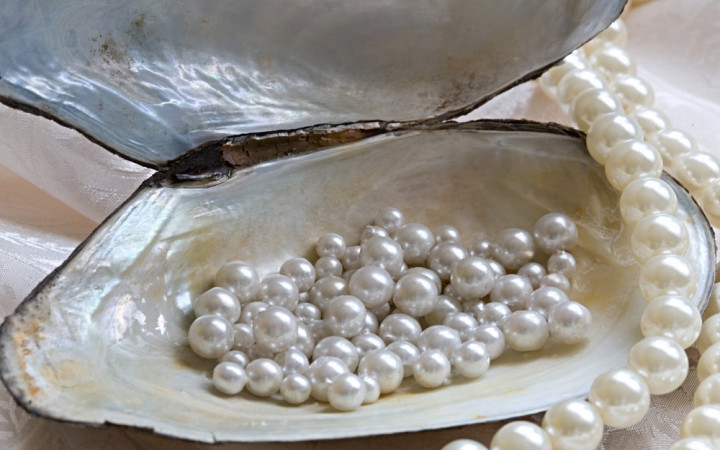The Mysterious and Magnificent World of Pearls
Pearls are one of the most captivating and enchanting gemstones in the world. These luminous, iridescent gems have been prized for their beauty for centuries, and have played a role in various cultures and traditions throughout history. But what exactly is a pearl, and how is it formed? In this article, we'll explore the fascinating world of pearls, from their origins to their symbolism and significance.
What is a Pearl?
A pearl is a hard, round object that is formed within the soft tissue of a living shelled mollusk. It is composed of layers of calcium carbonate and conchiolin, a protein that gives the pearl its iridescence. Pearls can be formed naturally or cultured, and come in a variety of shapes, sizes, and colors.
How are Pearls Formed?
Natural pearls are formed when a foreign object, such as a grain of sand or a parasite, enters the mollusk's shell and irritates its soft tissue. In response, the mollusk secretes a substance called nacre, which coats the irritant in layers of aragonite and conchiolin, forming a pearl. This process can take several years, and the resulting pearl may be small and irregular in shape.
Cultured pearls, on the other hand, are formed when a technician implants a small piece of tissue or bead into the mollusk's shell, which the mollusk then coats in layers of nacre. This process can be controlled and accelerated, resulting in larger and more perfectly shaped pearls.
Types of Pearls
There are several types of pearls, each with their own unique characteristics and value.
Akoya Pearls: These are the most familiar type of pearl, commonly used in classic pearl necklaces and jewelry. Akoya pearls are usually round or slightly oval in shape, and come in shades of white, cream, and pink.
South Sea Pearls: These are the largest and most valuable type of pearl, grown in the warm waters of the South Pacific. They can range in size from 10mm to 20mm, and come in a variety of colors, including white, silver, and gold.
Tahitian Pearls: These pearls are grown in French Polynesia, and are known for their dark, exotic colors, including black, gray, and green. They are typically larger than Akoya pearls, and have a unique iridescent quality.
Freshwater Pearls: These pearls are grown in freshwater lakes and rivers, and are known for their unique shapes and pastel colors. They are more affordable than other types of pearls, and are often used in fashion jewelry.
Symbolism and Significance of Pearls
Pearls have long been associated with wealth, power, and luxury, and have been prized by royalty and nobility throughout history. In ancient Rome, pearls were a symbol of wealth and status, and were worn by high-ranking officials and emperors. In the Middle Ages, pearls were believed to have healing properties and were used to treat various ailments.
Today, pearls are still considered a symbol of elegance and sophistication, and are often worn by brides and women of all ages. They are also a popular gift for special occasions, such as anniversaries and graduations.
Pearls are also associated with purity, innocence, and spirituality. In many cultures, pearls are believed to bring good luck and protect the wearer from harm. They are often given as gifts to newborns and children, as a symbol of hope and purity.
How to Care for Pearls
Pearls are delicate gems that require special care to keep them looking their best. Here are some tips for caring for your pearls:
Avoid exposing your pearls to chemicals, perfumes, and cosmetics, as they can damage the pearls' delicate surface. Always put on your pearls last, after you've finished applying makeup, hairspray, and perfume.
Store your pearls separately from other jewelry, as they can scratch easily. Wrap them in a soft cloth or store them in a padded jewelry box.
Wipe your pearls with a soft, damp cloth after wearing them, to remove any dirt or sweat. Never use harsh chemicals or abrasive materials to clean your pearls.
Have your pearls restrung every few years, especially if you wear them frequently. The silk thread that holds the pearls together can weaken over time and break, causing the pearls to scatter.
In conclusion, pearls are a fascinating and alluring gemstone, with a rich history and symbolic significance. Whether you're wearing a classic pearl necklace or a trendy pearl bracelet, pearls add a touch of elegance and sophistication to any outfit. And with proper care, your pearls can last for generations, becoming a cherished family heirloom. So next time you admire a beautiful pearl, take a moment to appreciate the mystery and magic of these captivating gems.
Labels: Interesting, science


0 Comments:
Post a Comment
Subscribe to Post Comments [Atom]
<< Home